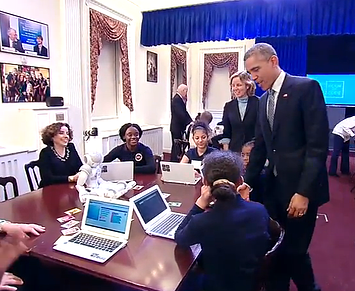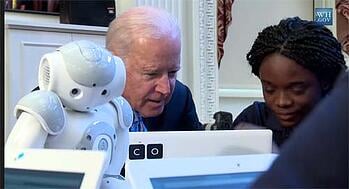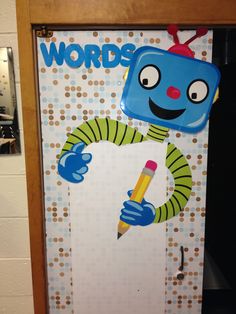RobotLAB Blog
Everything You Need To Know About Robotics in Businesses
Do Kids Really Care About Stem Education.

I recently came across a blog post titled Do Kids Really Care About Stem Education. Written by a young educator who teaches high school sophomores, he made some interesting observations that many of us might not want to agree with.
He writes that while teachers, parents, politicians, the whole darn adult zoo, put the emphasis on learning with the hope of future employment in the tech world, teenagers are not really that interested or excited in the world we believe we are building for them. He says...”High school kids have never been too excited about the adult world, and that hasn’t changed.” Some of us may find that observation upsetting, but that doesn’t mean it isn’t true. With the possible exception of a few goal-oriented, driven students, this is certainly the way it has always been. And would we really want it otherwise? Forget dreaming and get on with choosing a career before they leave high school?
One interchange with his students was particularly telling. After a failed attempt by the school to generate some interest in using teenage-tech savvy to build student engagement he came right out and asked them, “You guys don’t really like using technology at school, do you?” He went on to describe how... “They smiled and laughed. One student spoke for the class: ‘No, but you teachers all think we do.’ Another student said, ‘We like playing games and sending messages to each other, but we don’t want to use our phones for schoolwork.’ Their heads nodded emphatically in agreement.” Again, nothing new here. Just ask Facebook developer Mark Zuckerberg about how teens have been avoiding his site since they discovered their teachers, parents and grandparents were on there with them!
But don’t take from this that the author of this post thinks stem learning is a waste of time. What he has learned from his students is that most of them...,“want to play games and talk with their friends. They like to solve mysteries, and they want to learn more about people… but they are not listening when he tries to engage them by talking-up their futures in high tech. That shouldn’t come as much of a surprise to most high school math teachers who long ago gave up trying to interest their students in math by telling them it was something they were going to need to get a good job when they grew up.
The post Do Kids Really Care About Stem Education has received a good deal of attention online. It has been tweeted and retweeted often. Some of the attention was less than favorable, but our take on it here at RobotsLAB is the author of this post didn’t say anything that we didn’t already know in our heart of hearts--besides, we build robotic teaching aids that engage kids without asking them to include us on their cell phones. Our robots will most certainly help them develop the skills that they need for future employment. But don’t tell them that while they are enjoying them.
- 0 Comments
- Jan 6, 2015 8:25:44 PM
- Posted by Mike Nardine
- Topics:
Robots Swarm To MoMath

When I was a small boy growing up in the desert Southwest, I thought I wanted to grow up to be an anthropologist-- with the emphasis here on “ant.” They were everywhere in the desert: black ants, red ants, big ants and tiny ones. I had no idea why they fascinated me so, but fascinate me they did, and I spent my summers watching them marching and counter-marching across the sandy desert floor--and of course, being a boy, I messed with them in every conceivable way from frying with a magnifying glass to trampling their elaborate nests and pathways. I sprayed them with insecticide bombs and drowned them in water. All that, and I don’t think I ever managed to completely destroy one of their nests. A few days and they would be back as busy as ever.
Not overly introspective as a boy, I never questioned my intense interest in their organized behavior. That it was “neat,” was enough for me (neat, by the way, was the 1950’s functional equivalent of “cool”). Later--much later, I am forced to admit--I stumbled into robotics and discovered that the very ant behavior that had fascinated me long ago was now a much sought-after goal in robot behavior. Robotics scientists hope that clues to understanding swarming, flocking, herding, crowding, thronging, whatever you call this instinctive, self-organizing behavior of ants, birds, cows and some higher biologic organisms, will guide the way toward developing robots capable of accomplishing tasks without the need to program every single individual unit in a...gang? of robots.
“Gang” will apparently not be the term of choice. The National Museum of Math in New York (MoMath) recently opened a new exhibit named Robot Swarm. A “swarm” of bees maybe, but robots…? Anyway, the exhibit is in the old Taj Mahal of Boxing, Madison Square Garden and the robot swarming (ok, maybe “ganging” does sound a bit inelegant!) takes place under a transparent floor in the ring beneath the spectators’ feet. Just as I once tormented swarms of ants, spectators can now torment small robots by stomping around the ring sending them scurrying to and thro in an organized fashion. But unlike my earlier efforts in the desert which were nothing more than a mixture of childish curiosity and wanton destruction, the purpose here at MoMath is to demonstrate and improve robotic self-organizing behavior.
Why bother, you ask? Remember the Gulf Oil Spill of 2010? Because of the depth it took months to cap the open pipe. Currents, pressure and collapsing equipment changed the job requirements on a minute to minute basis. Imagine the savings to jobs and the environment if a tool consisting of thousands of small self-organizing robots could have been sent down to wrestle the plugs into position instead of trying to control the tools and plugs in a constantly changing environment from a distance.
Just as those ants I tormented so long ago were able to survive my actions with their instinct for self-organization, it is the hope of roboticists that someday it will be possible to assign to a robot swarm a task like shutting down that pipe and letting the swarm self-organize the tools and behavior necessary to get the job done.
- 0 Comments
- Jan 5, 2015 12:47:00 PM
- Posted by Mike Nardine
- Topics:
NAO robot visits President Obama for hour of code
 Here is a riddle: What did President Obama, the world’s most powerful man, say to NAO, the world’s most popular anthropomorphic robot for educational purposes, when they met on December 8, 2014 during an Hour of Code event at the White House?
Here is a riddle: What did President Obama, the world’s most powerful man, say to NAO, the world’s most popular anthropomorphic robot for educational purposes, when they met on December 8, 2014 during an Hour of Code event at the White House?
“Hi NAO! Last year, students and teachers across our country celebrated Computer Science Education Week with an Hour of Code. They learned new skills, programmed games and apps, and realized that while no one is born a computer scientist, becoming a computer scientist isn’t as scary as it sounds. With hard work, and a little math and science, anyone can do it.
For this year’s Computer Science Education Week, more than 48 million people have already participated, and we’re hoping even more of you will get involved. Don’t just consume things, create things.
Take an hour to learn more about the technology that touches every part of our lives. That’s how you can prepare yourself with the skills you need for your future. And that’s how you can help prepare our country for the future as well. America
has always been a nation of tinkerers, builders, and inventors.
We brought the world everything from the lightbulb and the telephone, to the iPad and the Internet. So whether you’re a young man trying his hand at programming for the first time or a young woman who is already hard at work on the next big thing, we’re counting on you–America’s young people, to keep us on the cutting edge. Thanks NAO, and happy coding!”
Wow eh? Who’d a thunk a robot-- Oh, you don’t believe this? Good for you! We kinda hoped you wouldn’t. No, actually this is the text of the speech President Obama gave the day before to open 2014’s Hour of Code. What he really opened the speech with was “Hi everybody!”
This silly subterfuge with the riddle was nothing more than an attempt to draw your attention to the fact that our buddy NAO was a guest at the White House. I mean, when was the last time you were there? NAO is apt to be seen anywhere these days.
Hey, just last January he was on Mars helping the astronauts master the finer points of communicating with robots! Well, Ok, that was Utah, an analogous Mars with analogous astronauts, but that’s about as close to Mars as we’re gonna get for a while and NAO was there with us!
One more riddle… Check out the image below. Do you think NAO and VP Biden were talking 2016?

- 0 Comments
- Jan 2, 2015 4:57:00 PM
- Posted by Mike Nardine
- Topics:
With NAO robot learn from the 2014 Hour of Code

The ability to do computer coding has become one of the big three...ok, make that the big four, goals of education: those are reading, writing, arithmetic and now computer coding. It appears that the nation that fails to educate its young in any one of these four will find itself severely disadvantaged in securing employment for them in the future. A development that quickly leads from mere unemployment to a falling standard of living and finally social unrest. The world is replete with national examples of this phenomenon.
The first three goals, the ability to read, write and avoid being short-changed have been universally met--in this country at least--for several centuries; the fourth, a knowledge of computer coding is--no matter what the ancients say--something new under the sun. I was able to survive without knowing anything about it until I was well into middle-age, but my children have always been aware of it and my grandchildren, still in elementary school, are already putting it to use.
One code-learning advantage leading to their acceptance and understanding that my grandchildren have that I and their parents didn’t have is The Hour of Code Initiative. Begun last year, 2013, by Code.Org, a non-profit organization, The Hour of Code bills itself as “a one-hour introduction to computer science, designed to demystify code and show that anybody can learn the basics.” On its website it claims The Hour of Code is a global movement reaching tens of millions of students in 180+ countries. Anyone, anywhere can organize an Hour of Code event. One-hour tutorials are available in over 30 languages. No experience needed. Ages 4 to 104. It is supported by many organizations such as Microsoft, Apple, Amazon, Boys and Girls Clubs of America and the College Board and as of this post, it states that 92,871,946 individuals have tried the Hour of Code--a lot of peoples grandkids among them!
The first of several available tutorials stars Anna and Elsa from Disney’s Frozen. They, along with Bill Gates and Mark Zuckerberg (who stay out of the way) help kids get interested and get going. There’s also an hour for kids who want to start coding their own games!
Hour of Code is available for use at home but many school systems are also enthusiastic about teaching code. Take for instance public schools in Miami-Dade and Broward counties, Florida. There’s already a NAO robot named Cody who is being programed to speak, walk, wave, and do Tai-Chi moves (which puts them one up on me!). The school principal believes that coding should become a required subject and says that “"It's allowing our boys and girls to have this wonderful opportunity to expand their horizons, to think creatively...Coding helps them to better understand reading, mathematics, science, so it's a collaboration of all subjects, doing something that they enjoy."
At home or at school. It doesn’t matter where we learn it, but learn coding we must if we are going to stay competitive on the world scene. And with easily accessible and user-friendly sites like Code.Org there is simply no excuse--for us or our progency---not learning or becoming proficient in coding.
- 0 Comments
- Dec 29, 2014 7:31:00 PM
- Posted by Mike Nardine
- Topics: NAO
robots-move-to-K12-classrooms

When the digital world was in its infancy the study of robotics was left to graduate courses at major universities--and not many of them! In a pitifully few schools K-12 students got a chance to work with robots after school. As a result, only a very few of the most STEM-minded students had anything to do with robots. Things have changed.Robots are no longer just extracurriculars. Educators across the country have come to realize that robots are among the most perfect of teaching tools.
Onslow County, North Carolina high school teachers, for example, are using the RobotsLAB Box to show students how certain math concepts are relevant to their increasingly digitally outfitted lives. The RobotsLAB Box contains four robots and a tablet to demonstrate and display these concepts. How better to engage agile young minds with quadratic equations than watching them roll out on the tablet to the tune of the quadcopter dancing above them?
In Okaloosa County, Florida, seventh graders built a tablet-controlled mini-Mars rover. Using the robot’s cameras and sensors they move about a table-top Martian landscape covered with red and blue balls. They get to program the robot to move about and collect the balls. At a tech center in Evansville, Indiana, high school students learn to program and operate a robotic arm. At Fayette County Schools in Kentucky, both middle and elementary schools have robotics as electives. In Colorado, the St.Vrain Valley School District has robotics in its K-12 curriculum because as Axel Reitzig, St. Vrain’s STEM coordinator says,” ... building STEM skills means really mastering technology. When students are designing and building robots, there’s a lot of trial and error and they’re getting that immediate feedback, helping them piece together the whole picture.”
It is hard to imagine that there are many school-age children in this country that are not in daily contact with the digital world. Most schools have computers. An amazing number of children in elementary middle and high school have smart phones-- and most kids without one wish they had and are actively pressing their parents for one. For today's’ students the future appears to be digital. It is past time for robots, the most perfect of digital wonders, to become part of every school’s regular curricula.
- 0 Comments
- Nov 13, 2014 7:55:00 PM
- Posted by Mike Nardine
- Topics:
State by state look EdTech planning
In preparing for battle I have always found that plans are useless, but planning is indispensable.
Dwight D. Eisenhower
Chelsea Wilhelm, a Leadership for Educational Equity (LEE) Fellow with the Education Policy Program at the New America Foundation, an American non-profit, nonpartisan public policy think tank located in Washington D.C., recently took a close look at individual state planning programs--or the lack thereof--for education technology.
Using an Education Week report from 1989 that stated that “technology planning is clearly a weak area of endeavor” as a baseline, she analyzed state plans for what she considered likely key components in any edtech development plan, student learning objectives, professional development goals for teachers and adequacy of staff support. What she discovered must give us pause: As I have found, that lack of thoughtful planning in the 1980s still exists in the present day. While the problems schools and educators face have evolved, the planning done by each state has not.
Ms. Wilhem’s report comes with a map of these United States that shows that a clear majority of states have no updated plans currently available. Check out the color scheme on the map below! In fact only 19 states have plans that extend beyond 2012. That’s two years ago, folks! Some states like Virginia, Ohio and Maryland come in for praise. Others, including Iowa, Montana and Missouri admit they have no intention to plan past 2012.
Why is this happening? Ms. Wilhem gives us two reasons she thinks most states seem uninterested in planning ahead. Reason number one is the decision in 2011 by the US Department of Education to eliminate the Enhancing Education through Technology (EETT) program, the largest federal incentive for state-level planning. Reason number two is pretty much the same as reason number one, except the funding authority is the Federal Communications Commission. The FCC is still funding with its E-Rate program, but not requiring proof of planning.
Keep in mind this doesn’t mean these laggard states are necessarily forgetting about funding for educational technology while they ignore planning for it. I believe it would be safe to say that all of them intend to keep their schools competitive in the new edtech paradigm. What is does mean, however, is that they are no longer approaching financing edtech in a systematic way. I mean, it’s hard to imagine that the entire West Coast, awash as it is in technology firms, won’t continue to update their classrooms. What will probably happen, however, sans prior planning, is a lot of wasted money on poorly thought-out programs.
- 0 Comments
- Oct 21, 2014 6:14:00 PM
- Posted by Mike Nardine
- Topics:
3d printing in K-12 grows average contract $39,000

3D printing is on a roll. Big businesses have had the technology available to them for the last twenty years or more. Recently however, 3D printing became available for the rest of us: for example, UPS opened 3D printing services in 100 stores nationwide last September. The monster transporter claims that “Small business owners and aspiring entrepreneurs will have the opportunity to print prototypes as part of the new product development process…. The UPS Store locations will be equipped to produce items like engineering parts, functional prototypes, acting props, architectural models, fixtures for cameras, lights and cables.” And that’s just the latest word from the private sector.
ONVIA dot Com, a website that describes itself as intelligence for winning more government business says the public sector is booming also. Take for instance these three exciting developments at the federal level. First of all, the army is working on developing guns using 3D technology. This particular example of a technology going to the dark side might not thrill some of us, but Pandora’s box is open. Private individuals have already uploaded files capable of printing a working--if rudimentary--gun on 3D printers found in many homes.
Another example of an important federal use of 3D technology that many will consider more positive than the first is NASA’s testing of a 3D printer in zero gravity. The hope is to bring the costs of spaceflight down by manufacturing tools and replacement parts in orbit rather than blasting them up there at $2000 or $3000 per lb (the Space Shuttle once ferried a pound into orbit for about $10,000; the lower figure is an estimate by Elon Musk of what he thinks his Space X can do). The third exciting development at the federal level is the National Institute of Health’s (NIH) launching of its NIH 3D Print Exchange. This website is all about downloading and editing 3D files related to health and science. No doubt we soon can print off a perfect replica of an Ebola virus….
While the federal government spends big bucks on developing 3D printers for spaceflight and guns, state and local governments have increased spending for 3D technology in schools. Oniva says the average 3D printing contract value for K-12 was $38,981. Again according to Oniva, contracts awarded for 3D printing in schools (K-12 and above) grew from 18 in 2012 to 27 in 2013. The figures for 2014 look to double as 24 awards were issued in the first six months of the year.
All of this is good news for the progress of additive manufacturing in this country. Many people, including President Obama, consider this new form as the next industrial revolution. It is great to see that the schools are getting involved, as that is where the future creators of the new technology and its future workers are now found. In partnership with Makerbot, developer of the under-$2000 3D printer for the masses, RobotsLAB has created lesson plans to help make a teacher’s job easier when it comes to teaching about this new manufacturing process.
- 0 Comments
- Oct 20, 2014 3:57:00 PM
- Posted by Mike Nardine
- Topics:
Why Do Americans Stink at Math?

A 2012 study of adults in 20 countries found that Americans ranked near the bottom in numeracy. Numeracy being defined simply as the ability to work with and understand numbers. What’s worse is that other studies showed that even the most educated among us displayed a deplorable inability to work with numbers: almost twenty percent of medical prescription showed math mistakes on the part of doctors and pharmacists. How can this be?
Why Do Americans Stink At Math is the title of an article written by Elizabeth Green for the New York Times Magazine on Sunday, July 23, 2014. The thesis is that the deplorable state of math education in the USA is the result of poor carry through on the part of our most highly placed educators. In spite of attempts to change the teaching of math by engaging students in actually studying math rather than memorizing it, the change is not happening. As evidence of this failure Ms Green relates the story of a Japanese educator who used math-teaching theory and methods developed in the USA to improve Japanese schools by engaging students but found these same theories and methods either ignored or misunderstood and misused in American schools. That Japanese educator thinks “Americans might have invented the world’s best methods for teaching math to children, but it was difficult to find anyone actually using them.” Again, why?
According to the article, American educators in the most important and influential teaching colleges don’t actually spend a whole lot of time teaching; they are into research and publishing. The result is great theory but poorly communicated methodology with the teachers actually teaching students. Common Core Standards provide us with a recent example of this disconnect.
Explains Ms Green, “With the Common Core, teachers are once more being asked to unlearn an old approach and learn an entirely new one, essentially on their own. Training is still weak and infrequent, and principals — who are no more skilled at math than their teachers — remain unprepared to offer support. Magdalene Lampert, a professor of education at the University of Michigan notes “In the hands of unprepared teachers, alternative algorithms are worse than just teaching them standard algorithms.” What results, of course, is confusion leaping from teacher to student to parent. A sequence Ms Green illustrated with this amusing anecdote: The comedian Louis C.K. parodied his daughters’ homework in an appearance on “The Late Show With David Letterman”: “It’s like, Bill has three goldfish. He buys two more. How many dogs live in London?”
Textbooks haven’t really made the jump to Common Core either. They have “have received only surface adjustments, despite the shiny Common Core labels that decorate their covers.” On the textbook issue, no less a personage than Phil Daro, a senior member of America’s Choice and one of three principal writers of the math Common Core Standards agrees, “To have a vendor say their product is Common Core is close to meaningless…”
It is not necessary to agree with every point made in this article to agree with the overall conclusion so succinctly implied by the title, that Americans do indeed stink at math. And there is no doubt that teaching methodology must be greatly improved if we in this country are to retain our technological superiority. Engagement, not rote learning must be encouraged. Our goal here at RobotsLAB is to provide teachers with technological aids, our robots and included curricula, that will engage and encourage students to study rather than memorize.
- 0 Comments
- Oct 17, 2014 3:09:00 PM
- Posted by Mike Nardine
- Topics: Math
Engaging students a creative teacher project

Teachers, need some new lesson plan ideas to meet the requirements of the new Common Core Standards? Well, BetterLesson.Com and your own Union, the National Education Association's Master Teacher Project heard your cry for the help that you weren't getting from your administrators and came up with a plan of their own: they searched out lesson plans from 95 or more of the best teachers in the country and paid them $15,000 each to put their plans online with BetterLesson.com. All these plans and related materials that they paid for are now online free for your perusal. Besides affording teachers fresh ideas, Instructional philosophies and implementation tips will also be provided with the lesson plans.
Nor is the NEA alone in assisting teachers in working within the new paradigm. In 2012 the American Federation of Teachers worked out a similiar lesson-sharing plan with ShareMyLesson.Com. Unlike the NEA, the AFT has teachers post their own plans. Like the NEA, the AFT shares the plans for free. This plan too, appears successful as it has 250,000 registered members and has had almost two-and-half million lesson downloads during the 2012-2013 school year.
In many quarters, Common Core has not been met with positive reviews. The transition has not been smooth. The complaint that teachers were given insufficient training is common. While there is no substitute for that training, both of these websites, BetterLesson.Com and ShareMyLesson.Com might help teachers get by until they get the training they deserve.
RobotsLAB is also in the business of assisting teachers with meeting the requirements of the new Common Core standards. Our engaging robotic teaching aids and their included curricula have been designed with the standards in mind and will provide your classrooms with effective alternatives to boring texts.
- 0 Comments
- Oct 16, 2014 4:39:34 PM
- Posted by Mike Nardine
- Topics: Education, Student Engagement
3D printer in the classroom making and unstructured exploration
When I was a kid and enormous cars with long sharp tail fins ruled the road, it was said and believed by many, "If it's good for General Motors, it's good for America." Not so today with GM recently coming out of bankruptcy. But things haven't changed all that much, only the names of the mega corporations we worship. Yesteryear it was GM, today it's Google. And with good reason: GM came roaring out of the Second World War the largest, most productive business on the planet; they were doing something right! The same for Google in this era; their search engine and browser rules the Internet. Their cellphone operating system connects the globe.
With Google products dominating the new industrial age, it shouldn’t come as much of a surprise that Google workplace practices are garnering a lot of attention--and emulation--in business and education. Chief among these much emulated practices is 20% Time.
20% Time, as defined by the Google practice, is allowing their employees 20% of their work time to work on creative projects that are unrelated to the employee’s assigned projects. The result has been the creative surge that brought Google to the forefront of its industry.
In education, 20% Time allows kids a chance to take their attention off class content and get creative. Oh, sure, you say, untethering kids from classroom routine and letting them get creative sounds great, but without structure in the classroom you soon get chaos. Good point! The way to avoid chaos is to add a touch of chaos-preventing structure. The Maker Place is a great way to add that structure.
The Maker Place isn’t simply a portion of the classroom where kids are turned loose to get into trouble. The idea is to provide a space where kids can loose their creativity with engaging projects suggested by teachers and other students . The Maker Place should also include the materials ( 3D printer ) necessary to complete the projects.
RobotsLAB’s STEM BOT 3D CLASS provides both the curriculum and the materials for a perfect Maker Place. The STEM BOT 3D CLASS teaches students how to 3D print a robot, assemble it, work on the electronics, use a 3D printer and finally program it using Scratch.Kids love robots. It doesn’t take much effort on the part of the teacher to get them interested in making one.
Educators, give some thought to freeing up time for your students creative urges--without losing control, of course. 20% Time works for Google. It might work for you.
- 0 Comments
- Oct 15, 2014 4:57:00 PM
- Posted by Mike Nardine
- Topics:
Relevant Posts
- Augmented Reality: A Tool for Teaching Students Robot Programming
- Fostering Innovation Through Youth Education in STEM and EdTech
- How Parents Can Foster STEM Learning Beyond the Classroom
- How Robotics Cultivates a Deep Understanding of Mathematics in Students
- RobotLAB Receives EDTech Chronicle 2023 ‘BESTIE’ Award for Landmark Partnership with American Samoa Dept. of Education.
Subscribe to Email Updates
-
I Want To Learn MoreADDITIONAL INFORMATION

